Dale Abbey - Part
1 - The Approach
w/e 06 February
2005
All
this week's pictures were taken with a Kodak DX6490
 |
Two of the most easily recognisable
images of Dale Abbey are the Cat and Fiddle Windmill and, of
course, the ruined arch of the Abbey itself. As well as these
two familiar sights, there is much more to be seen in the village,
small as it is, and I hope to show you most of it in this series.
Much of the information I will use will be gleaned from a leaflet
published in 1992 by the Erewash Groundwork Trust supported by
the Countryside Commission but all of the photos will be mine.
In this first part we will follow the road that passes through
the village starting at a point on the Ilkeston to Derby Road
near the windmill.
|
 |
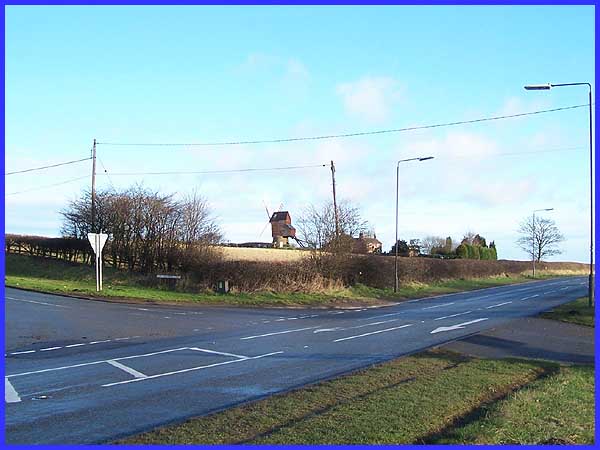
There's a small lay-by on Ladywood
Road, almost opposite Cat and Fiddle Lane which leads to West
Hallam and Stanley (left). Ladywood Road extends from Kirk Hallam
towards Spondon on the way from Ilkeston to Derby and no doubt
anyone who pulls into the lay-by will look in the direction of
Ilkeston and observe the Cat and Fiddle Windmill. But more of
the mill later for, although we are in the Parish of Dale Abbey,
our main objective in this series lies in the opposite direction.
|
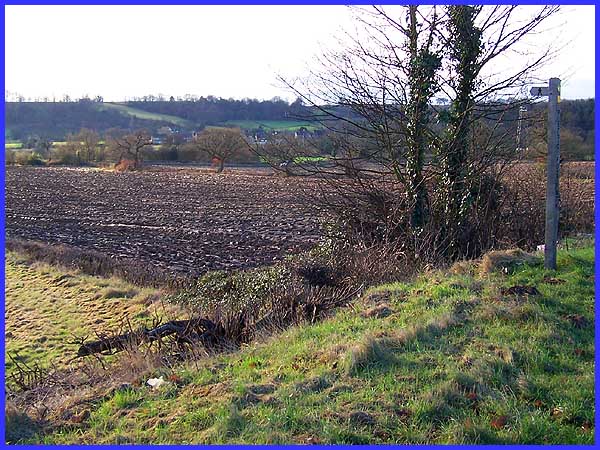
From the lay-by, a signpost points to a
footpath across the fields and in the distance some buildings
can be made out between the trees. These are in the village of
Dale Abbey and the leaflet I referred to above describes the
village as lying "in a quiet backwater of Erewash among
low hills and farmland". It goes on to say " one could
be forgiven for imagining oneself to be in the deepest heart
of rural England" although the centre of Derby is less than
eight miles away and the industrial landscape around Ilkeston
and Stanton is much closer than that.
|
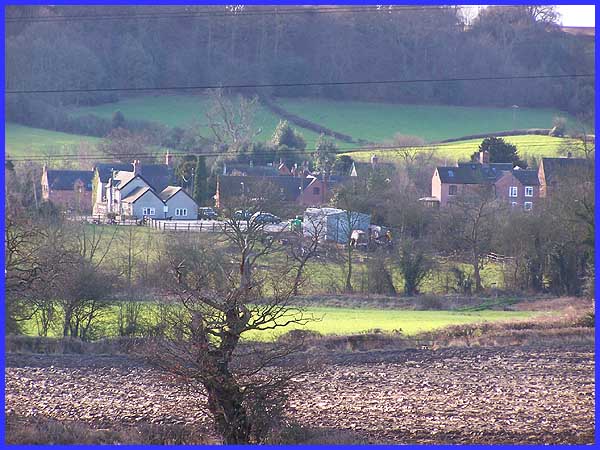
The phrase "Blink and you'll miss it"
could well have been coined for motorists who travel on their
merry way along Ladywood Road. Those who care to stop
however and take a closer look across this rural landscape, as
I did with this zoomed image, will see the prominent large grey
building to the left of the image. The is one of the focal points
of the village, the Carpenter's Arms Public House. We shall shortly
see the front of the pub but our approach on this occasion is
not across the fields. To enter the village by road, we need
to travel a little further along Ladywood Road towards Derby
and turn at the next junction.
|
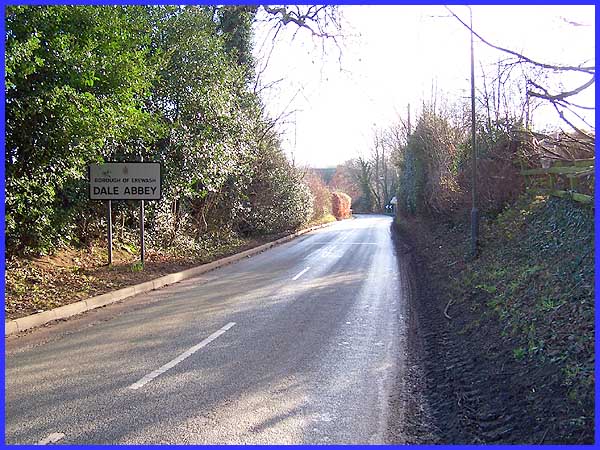
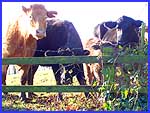 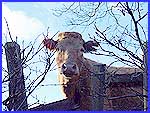 This takes us down Arbour Hill into the village - a
pleasant lane with farmland beyond the hedgerows to the left
and, as the name would suggest, a wooded hillside to the right.
Shortly before the sharp left hand bend into the village, the
trees on the right give way to a field behind the fence-topped
steep bank at the side of the road, the occupants of which (small
pictures left and right) proved very inquisitive. This takes us down Arbour Hill into the village - a
pleasant lane with farmland beyond the hedgerows to the left
and, as the name would suggest, a wooded hillside to the right.
Shortly before the sharp left hand bend into the village, the
trees on the right give way to a field behind the fence-topped
steep bank at the side of the road, the occupants of which (small
pictures left and right) proved very inquisitive.
|
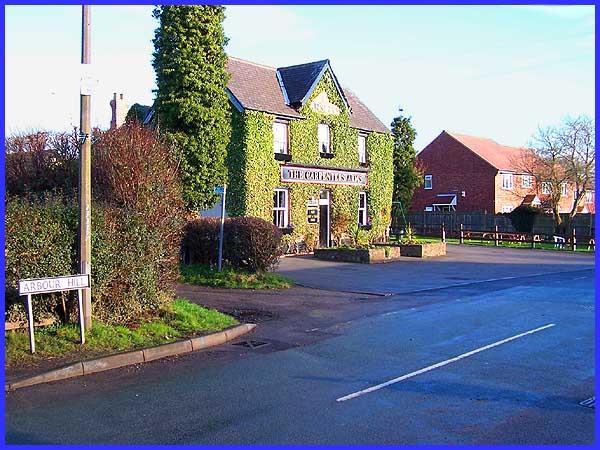
Once around the bend we renew our acquaintance
with the Carpenter's Arms but this time from the front. The front
part of the pub was built about 1880 but there are older timbered
parts that date back to the 1690's. The license to sell liquor
was held by the the Clements/Herety family for over sixty years
until 1992.
|
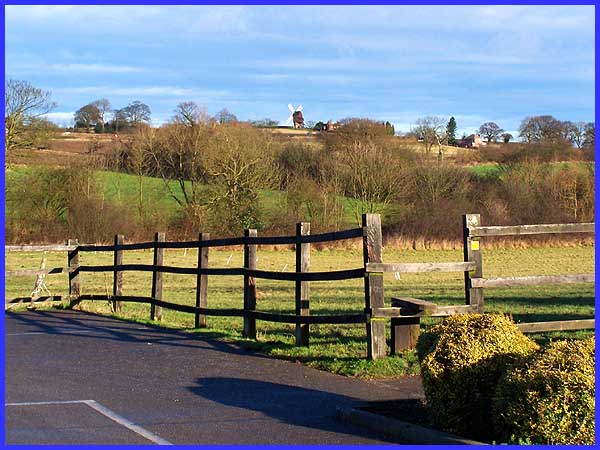
From the car park at the rear of the pub,
another footpath over the style leads back to Ladywood Road.
Note that this is not the same footpath that we saw earlier but
this vantage point does provide a good view of the windmill.
This picture was taken at the beginning of February but, for
me, it conjures up images of balmy summer evenings, pleasant
surroundings, good company, children playing and of course something
to quench the thirst. And going back in time, you could also
imagine a smock clad miller walking the half mile across the
fields after a hard day's work to partake of a pint of ale. The
mill was built in 1788 and is a wooden post mill. This means
that it has a stone roundhouse beneath a wooden box-like structure
containing the machinery. The box rotated on a wooden post and
had to be turned by hand by the miller so that the sails were
correctly positioned to catch the wind. It is the only surviving
post mill in Derbyshire and has recently undergone extensive
renovation but remains in private ownership and is not open to
the general public.
|

